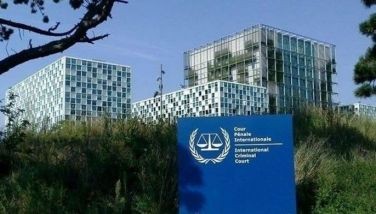Small fishers left out of aquaculture projects
June 19, 2002 | 12:00am
Click here to read Part II
At present, four investors, led by the commercial fishing giant Frabelle Fishing Corp., are engaged in bangus farming in Bolinao, Pangasinan. Eight more want to venture into fish cage culture, excluding two potential foreign investors and the Alsons firm of the powerful Alcantara clan. Another investor with plans of putting up a bangus canning factory has already reserved 10 hectares in the park.
In comparison, only two fishers’ cooperatives have so far been able to raise money enough for two to three smaller cages.
The Bureau of Fisheries and Aquatic Resources (BFAR) also trumpeted the creation of 20,000 jobs once the park is fully developed. Right now, though, it employs only 519 workers, mainly engaged in pre-production work, preparing the cages and then eventually for harvesting the fish.
"This is what we get in exchange for the big investment," remarks Arsenio Tanchuling, executive director of the nongovernment Tambuyog Development Center in Quezon City. "Sure, this excludes the fish growing part, but only a few people are needed to guard the fish cages anyway. In most cases, two people – often relatives of the owner – and many dogs are all you need to ensure that no one will steal from the cages."
Observers predict that some small fishers may just wind up reprising the role many of them have been playing in the last few years. That is, as hired laborers whose income is derived mainly from a small percentage – about six percent – of the net value of the fish harvest. The amount suffices for the basic needs of the fishers’ families during the harvest season. But during the lean months, when there is no harvest, or during catastrophes like fish kills, the fishers-turned-pen workers have had to make do with a P1,000 monthly pay.
Tanchuling, for his part, concedes that there are bound to be benefits if the planned aquaculture/mariculture operations are to be practiced according to scale. But he says that he simply cannot understand the government’s preferential treatment of the aquaculture sector.
"The problem with this promotion, this bias for aquaculture, is that it’s as if there are no other fisheries subsectors," he says.
Indeed, such support is sorely lacking in the municipal fisheries sector, which accounts for one.
Small fishers grouse that the government even seems to be dragging its feet in implementing an environment department order for coastal municipalities to delineate and delimit boundaries of their municipal waters (an expanse of 15 kilometers from the coasts). The order was actually issued in accordance with the Fisheries Code, and obviously aimed at widening the fishing grounds of small fishers. But the BFAR itself has not categorically declared its support of the delineation process, in the wake of opposition from the commercial fisheries sector, whose backers include members of Congress.
Peeved fishers say that at the very least then, they should be provided adequate post-harvest facilities such as municipal fish ports and landings, ice plant and cold storage, and processing plants to help reduce their losses.
Tanchuling’s Tambuyog maintains that municipal fisheries can respond to the growing fish requirements of Filipinos if only the government would provide support for its development.
Though declining compared to aquaculture, the volume of demersal (bottom-dwelling, non-migratory fish species) fish catch, which is dominated by municipal fishers, has been relatively stable, fisheries production data from 1989-1998 show. Such is also the case with municipal fishery production in pelagic fisheries, the domain of commercial fishers.
Municipal marine and inland fisheries production in the last three years has even posted an average 947 thousand metric tons. The commercial fisheries sector, in comparison, harvested 957 thousand metric tons during the same period.
Yet BFAR’s projections for the next 10 years place the burden of producing half of the country’s total fish requirement on the aquaculture sector.
Thus, aside from the mariculture park in Samal Island, the BFAR wants to set up similar projects particularly in Luzon – among them Silangin Bay, Masinloc and Palauig Bay in Zambales; Mabayo Cove in Bataan; and Sto. Tomas in La Union. This is in line with its targets of a 24,000-hectare expansion and the intensified production in milkfish (2.5 metric tons per hectare a year), tilapia (five metric tons per hectare a year), and prawn (four metric tons per hectare a year) culture.
"The good thing about this," says BFAR Region I director Nestor Domenden, "is there are already established methods, identified things to follow to ensure the sustainability of the area because of the systematic way of putting the structures, feeding, stocking. And all other regular activities there will be regulated."
Anticipating criticisms about the possible negative effects all these mariculture parks can have on the environment, Domenden hastens to add that there is "an even bigger chance that this will not have as much adverse impacts" than what is now practiced in scattered fish pens and cages.
But the recent major fish kills in some Luzon coastal towns, particularly that which took place in February in Bolinao, Pangasinan, have many experts advising more caution with regards to aquaculture.
Dr. Gil Jacinto, director of the Marine Science Institute of the University of the Philippines, for one, is anxious about the rate and pace at which aquaculture/mariculture is being pursued. He says, "It’s going at a much greater pace than ideal. The scenario I think is that we’ll have an unbridled expansion of coastal aquaculture and it would be a repeat of what we have seen in the prawn industry."
Shrimp culture collapsed in the latter half of the 1990s following the widespread outbreak of the luminous bacteria in shrimp farms in Western Visayas.
Jacinto says, "At the end of the day, it’s to everybody’s benefit to make sure that mariculture activities are sustainable not just for the environment but for the people, even for the entrepreneurs who want to make a living out of it. And it has to be a thinking not for the short-term, but sustainability in the long haul." – With a report from Ayan Mellejor/Davao
( Conclusion ) |
In comparison, only two fishers’ cooperatives have so far been able to raise money enough for two to three smaller cages.
The Bureau of Fisheries and Aquatic Resources (BFAR) also trumpeted the creation of 20,000 jobs once the park is fully developed. Right now, though, it employs only 519 workers, mainly engaged in pre-production work, preparing the cages and then eventually for harvesting the fish.
"This is what we get in exchange for the big investment," remarks Arsenio Tanchuling, executive director of the nongovernment Tambuyog Development Center in Quezon City. "Sure, this excludes the fish growing part, but only a few people are needed to guard the fish cages anyway. In most cases, two people – often relatives of the owner – and many dogs are all you need to ensure that no one will steal from the cages."
Observers predict that some small fishers may just wind up reprising the role many of them have been playing in the last few years. That is, as hired laborers whose income is derived mainly from a small percentage – about six percent – of the net value of the fish harvest. The amount suffices for the basic needs of the fishers’ families during the harvest season. But during the lean months, when there is no harvest, or during catastrophes like fish kills, the fishers-turned-pen workers have had to make do with a P1,000 monthly pay.
Tanchuling, for his part, concedes that there are bound to be benefits if the planned aquaculture/mariculture operations are to be practiced according to scale. But he says that he simply cannot understand the government’s preferential treatment of the aquaculture sector.
"The problem with this promotion, this bias for aquaculture, is that it’s as if there are no other fisheries subsectors," he says.
Indeed, such support is sorely lacking in the municipal fisheries sector, which accounts for one.
Small fishers grouse that the government even seems to be dragging its feet in implementing an environment department order for coastal municipalities to delineate and delimit boundaries of their municipal waters (an expanse of 15 kilometers from the coasts). The order was actually issued in accordance with the Fisheries Code, and obviously aimed at widening the fishing grounds of small fishers. But the BFAR itself has not categorically declared its support of the delineation process, in the wake of opposition from the commercial fisheries sector, whose backers include members of Congress.
Peeved fishers say that at the very least then, they should be provided adequate post-harvest facilities such as municipal fish ports and landings, ice plant and cold storage, and processing plants to help reduce their losses.
Though declining compared to aquaculture, the volume of demersal (bottom-dwelling, non-migratory fish species) fish catch, which is dominated by municipal fishers, has been relatively stable, fisheries production data from 1989-1998 show. Such is also the case with municipal fishery production in pelagic fisheries, the domain of commercial fishers.
Municipal marine and inland fisheries production in the last three years has even posted an average 947 thousand metric tons. The commercial fisheries sector, in comparison, harvested 957 thousand metric tons during the same period.
Yet BFAR’s projections for the next 10 years place the burden of producing half of the country’s total fish requirement on the aquaculture sector.
Thus, aside from the mariculture park in Samal Island, the BFAR wants to set up similar projects particularly in Luzon – among them Silangin Bay, Masinloc and Palauig Bay in Zambales; Mabayo Cove in Bataan; and Sto. Tomas in La Union. This is in line with its targets of a 24,000-hectare expansion and the intensified production in milkfish (2.5 metric tons per hectare a year), tilapia (five metric tons per hectare a year), and prawn (four metric tons per hectare a year) culture.
"The good thing about this," says BFAR Region I director Nestor Domenden, "is there are already established methods, identified things to follow to ensure the sustainability of the area because of the systematic way of putting the structures, feeding, stocking. And all other regular activities there will be regulated."
Anticipating criticisms about the possible negative effects all these mariculture parks can have on the environment, Domenden hastens to add that there is "an even bigger chance that this will not have as much adverse impacts" than what is now practiced in scattered fish pens and cages.
But the recent major fish kills in some Luzon coastal towns, particularly that which took place in February in Bolinao, Pangasinan, have many experts advising more caution with regards to aquaculture.
Dr. Gil Jacinto, director of the Marine Science Institute of the University of the Philippines, for one, is anxious about the rate and pace at which aquaculture/mariculture is being pursued. He says, "It’s going at a much greater pace than ideal. The scenario I think is that we’ll have an unbridled expansion of coastal aquaculture and it would be a repeat of what we have seen in the prawn industry."
Shrimp culture collapsed in the latter half of the 1990s following the widespread outbreak of the luminous bacteria in shrimp farms in Western Visayas.
Jacinto says, "At the end of the day, it’s to everybody’s benefit to make sure that mariculture activities are sustainable not just for the environment but for the people, even for the entrepreneurs who want to make a living out of it. And it has to be a thinking not for the short-term, but sustainability in the long haul." – With a report from Ayan Mellejor/Davao
BrandSpace Articles
<
>
- Latest
- Trending
Trending
Latest
Trending
Latest
Recommended






























